Instruction
How to hit a push draw and a pull fade
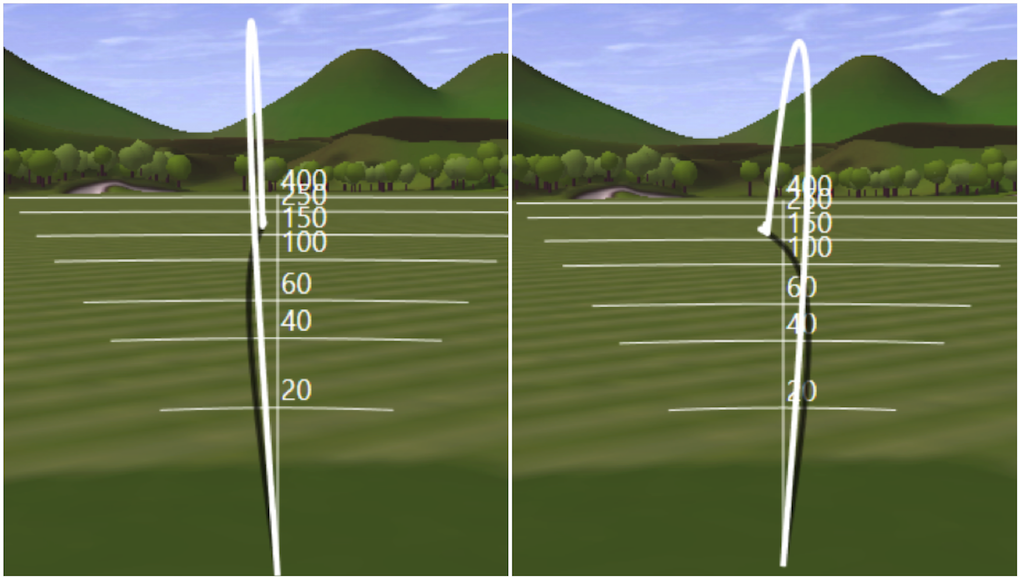
Most GolfWRXers know that the flight of a golf ball begins mostly in the direction of the club face at impact, and curves away from the swing path. Many golfers still misunderstand the concept, however, which is why this statement will probably get you thinking:
Golfers draw the ball with an open face at impact and fade the ball with a closed face at impact.
Yes, you did read that correctly.
In this article, I want to show you the two most desirable shot patterns — the push draw and the pull fade — and how golfers can learn to hit these shots with the assistance of Trackman numbers.
The Push Draw
Everyone wants to hit a draw, but few know what a real draw looks like, so here it is. The ball begins right of the target (for a right-handed golfer), apexes, then falls back to the target without moving left of it.
Here’s how it happened in the shot above.
At impact, the club face was right, or opened to the target at impact by 2.1 degrees. For that reason the shot started 2.7 degrees to the right of the flag.
Please Note: If you contact the ball off-center, especially with a driver or fairway wood, the launch direction of the ball can change due to something called “Gear Effect.” Learn more about it here. This article assumes that you are contacting your shots in or around the center of the club face.
As for the club path, it was 4.9 degrees to the right of the target line, which means that the club face was left of the path by -2.8 degrees. So the club face was opened to the target, but closed to the club path, creating the desired right-to-left curvature.
If the club face was any more closed (left) of the club path, the curvature of the shot (due to something called spin loft) could easily turn the shot into a nasty hook. Remember, it doesn’t take much differential in the face-to-path ratio, the difference between where the club face is pointing at impact and the direction of the club path, to create ball flight curvature.
The Push Drawer’s Problem
When most people try to hit a draw or push draw, they get overzealous and rotate the face too far left of the target at impact. When this happens, the face is pointed well left of the inside-to-outside path, leading to a pull hook.
In the shot above, you can see that the path was 4.5 degrees from inside to outside, but the face was -8.5 degrees left of the target. It was also -13 degrees left of the path. Pull-hook city!
The lesson to learn here is to trust your release through impact and try not to manually force the club face closed.
The Pull Fade
In my experience, the average golfer’s “fade” is actually a “wipe slice,” a weak shot that fills the trees and water hazards that line the right side of golf holes across the country. The fade that most golfers desire is called a “power fade,” which begins left of the target, apexes, and then falls back to the target without moving right of it.
As you can see in the shot above, the path is -3.5 degrees left of the target line as shown by the blue arrow, while the face is right of the path by 1.2 degrees, causing the ball to move left to right. The face was -2.2 degrees left, or closed to the target at impact, which started the ball slightly left of the target at -2.5 degrees as desired.
The Pull Fader’s Problem
The shot above shows a wipe fade, which begins well right of the target and moves farther right. It is a weak, non-compressed shot that feels like the ball is “crawling” up the face.
As you can see, the path is still left of the target at -1.2 degrees, but the face is 11.8 degrees to the right of the target, giving us a face-to-path ratio of 13 degrees. Whenever a (right-handed) golfer’s face is well right of a leftward path, he or she will increase spin loft and subsequent spin rate with all other things being equal. And as spin-loft increases, compression is lost.
Hopefully this analysis helps you see how to hit the pull fade and push draw, and what happens when each shot is performed incorrectly. The best way to learn these shots is to experiment on a launch monitor such as Trackman to see how different paths and face positions effects ball flight.
If you don’t have access to a launch monitor, make sure to note where your shots are starting compared to where they end up to better understand the impact of your face-to-path ratio.
Happy New Year!
- LIKE158
- LEGIT24
- WOW11
- LOL2
- IDHT5
- FLOP6
- OB2
- SHANK23
Instruction
Clement: Laid-off or perfect fade? Across-the-line or perfect draw?

Some call the image on the left laid off, but if you are hitting a fade, this could be a perfect backswing for it! Same for across the line for a draw! Stop racking your brain with perceived mistakes and simply match backswing to shot shape!
- LIKE0
- LEGIT0
- WOW0
- LOL0
- IDHT0
- FLOP0
- OB0
- SHANK0
Instruction
The Wedge Guy: The easiest-to-learn golf basic

My golf learning began with this simple fact – if you don’t have a fundamentally sound hold on the golf club, it is practically impossible for your body to execute a fundamentally sound golf swing. I’m still a big believer that the golf swing is much easier to execute if you begin with the proper hold on the club.
As you might imagine, I come into contact with hundreds of golfers of all skill levels. And it is very rare to see a good player with a bad hold on the golf club. There are some exceptions, for sure, but they are very few and very far between, and they typically have beat so many balls with their poor grip that they’ve found a way to work around it.
The reality of biophysics is that the body moves only in certain ways – and the particulars of the way you hold the golf club can totally prevent a sound swing motion that allows the club to release properly through the impact zone. The wonderful thing is that anyone can learn how to put a fundamentally sound hold on the golf club, and you can practice it anywhere your hands are not otherwise engaged, like watching TV or just sitting and relaxing.
Whether you prefer an overlap, interlock or full-finger (not baseball!) grip on the club, the same fundamentals apply. Here are the major grip faults I see most often, in the order of the frequency:
Mis-aligned hands
By this I mean that the palms of the two hands are not parallel to each other. Too many golfers have a weak left hand and strong right, or vice versa. The easiest way to learn how to hold the club with your palms aligned properly is to grip a plain wooden ruler or yardstick. It forces the hands to align properly and shows you how that feels. If you grip and re-grip a yardstick several times, then grip a club, you’ll see that the learning curve is almost immediate.
The position of the grip in the upper/left hand
I also observe many golfers who have the butt of the grip too far into the heel pad of the upper hand (the left hand for right-handed players). It’s amazing how much easier it is to release the club through the ball if even 1/4-1/2″ of the butt is beyond the left heel pad. Try this yourself to see what I mean. Swing the club freely with just your left hand and notice the difference in its release from when you hold it at the end of the grip, versus gripping down even a half inch.
To help you really understand how this works, go to the range and hit shots with your five-iron gripped down a full inch to make the club the same length as your seven-iron. You will probably see an amazing shot shape difference, and likely not see as much distance loss as you would expect.
Too much lower (right) hand on the club
It seems like almost all golfers of 8-10 handicap or higher have the club too far into the palm of the lower hand, because that feels “good” if you are trying to control the path of the clubhead to the ball. But the golf swing is not an effort to hit at the ball – it is a swing of the club. The proper hold on the club has the grip underneath the pad at the base of the fingers. This will likely feel “weak” to you — like you cannot control the club like that. EXACTLY. You should not be trying to control the club with your lower/master hand.
Gripping too tightly
Nearly all golfers hold the club too tightly, which tenses up the forearms and prevents a proper release of the club through impact. In order for the club to move back and through properly, you must feel that the club is controlled by the last three fingers of the upper hand, and the middle two fingers of the lower hand. If you engage your thumbs and forefingers in “holding” the club, the result will almost always be a grip that is too tight. Try this for yourself. Hold the club in your upper hand only, and squeeze firmly with just the last three fingers, with the forefinger and thumb off the club entirely. You have good control, but your forearms are not tense. Then begin to squeeze down with your thumb and forefinger and observe the tensing of the entire forearm. This is the way we are made, so the key to preventing tenseness in the arms is to hold the club very lightly with the “pinchers” — the thumbs and forefingers.
So, those are what I believe are the four fundamentals of a good grip. Anyone can learn them in their home or office very quickly. There is no easier way to improve your ball striking consistency and add distance than giving more attention to the way you hold the golf club.
More from the Wedge Guy
- The Wedge Guy: Golf mastery begins with your wedge game
- The Wedge Guy: Why golf is 20 times harder than brain surgery
- The Wedge Guy: Musings on the golf ball rollback
- LIKE86
- LEGIT13
- WOW6
- LOL1
- IDHT0
- FLOP4
- OB1
- SHANK8
Instruction
Clement: Stop ripping off your swing with this drill!

Not the dreaded headcover under the armpit drill! As if your body is defective and can’t function by itself! Have you seen how incredible the human machine is with all the incredible feats of agility all kinds of athletes are accomplishing? You think your body is so defective (the good Lord is laughing his head off at you) that it needs a headcover tucked under the armpit so you can swing like T-Rex?
- LIKE0
- LEGIT2
- WOW2
- LOL0
- IDHT0
- FLOP0
- OB0
- SHANK2
-

 19th Hole2 weeks ago
19th Hole2 weeks agoDave Portnoy places monstrous outright bet for the 2024 Masters
-

 19th Hole3 days ago
19th Hole3 days agoJustin Thomas on the equipment choice of Scottie Scheffler that he thinks is ‘weird’
-

 19th Hole2 weeks ago
19th Hole2 weeks agoTiger Woods arrives at 2024 Masters equipped with a putter that may surprise you
-

 19th Hole2 days ago
19th Hole2 days ago‘Absolutely crazy’ – Major champ lays into Patrick Cantlay over his decision on final hole of RBC Heritage
-

 19th Hole3 weeks ago
19th Hole3 weeks agoReport: Tiger Woods has ‘eliminated sex’ in preparation for the 2024 Masters
-

 19th Hole1 week ago
19th Hole1 week agoTwo star names reportedly blanked Jon Rahm all week at the Masters
-

 19th Hole1 week ago
19th Hole1 week agoReport: LIV Golf identifies latest star name they hope to sign to breakaway tour
-

 19th Hole1 week ago
19th Hole1 week agoNeal Shipley presser ends in awkward fashion after reporter claims Tiger handed him note on 8th fairway

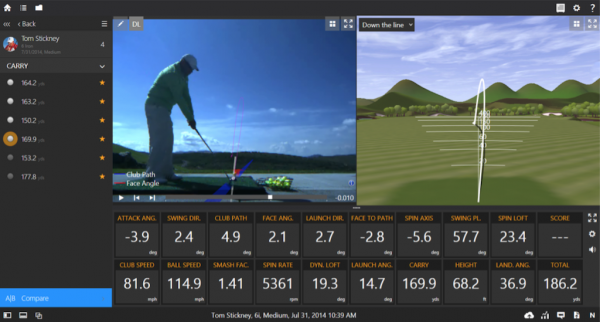
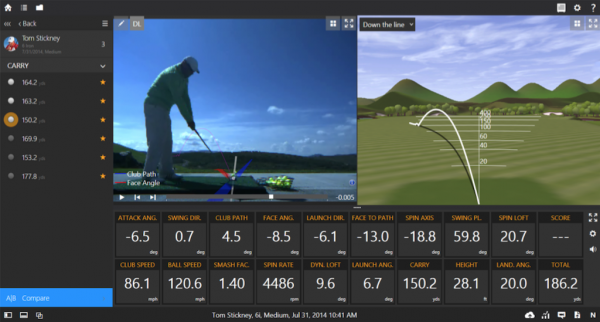
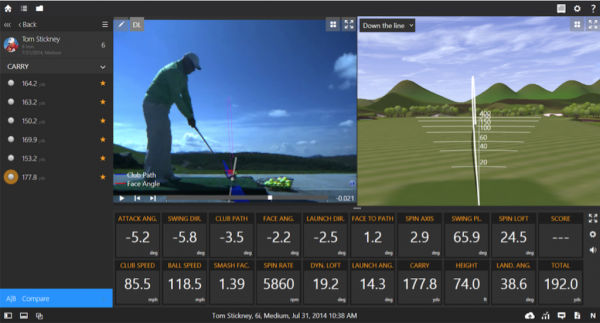
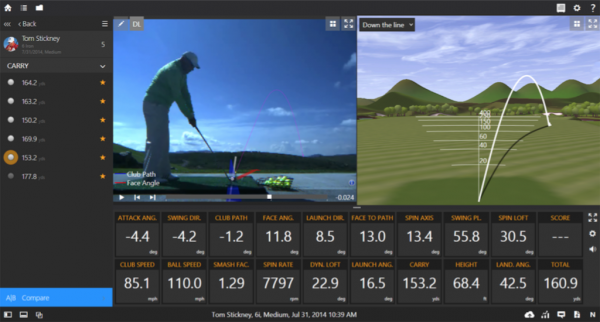














George
Jan 5, 2016 at 11:18 am
Nice Article but can you make a video and post it with the articles?
Chris
Jan 4, 2016 at 12:52 am
Great Article Tom. I have been struggling with a push draw or as commonly known a nasty hook because my club face has been far too closed at impact. Plus, my negative angle of attack increased further pushing my path right exacerbating the problem.
Swinging a little bit more left with a more open club face has brought the push draw back.
No more
Jan 3, 2016 at 6:15 pm
You know what would easier? Instead of saying draw or fade, just say “right to left” or “left to right.”
Then you can apply it to right hand and left hand without saying those other words, and then all you have to do is pick the point of the bend of the ball to whatever target you’re hitting. No need for those words any more.
Joe
Jan 3, 2016 at 2:11 pm
I guess I am stuck on “old school” terminology. To me a “push draw” used to be just a “draw”, and a
“pull fade” was just a “fade”. I have always hit a draw and fade this way, and don’t know any other way to play those shots.
Kind of reminds me of the term “blade putter”! Originally, a blade putter was a putter like the Arnold Palmer 8802, SC Circa no. 1, etc. Sometime in the not too distant past a blade putter because the Ping Anser style that is perimeter weighted.
Things change, I guess.
Steve
Jan 2, 2016 at 9:43 pm
This guy loves trackman, is he useless otherwise. I can get a sixteen year old to tell me the trackman stats. He is only 1/60 that thought attending trackman university was worth it. Trackman university, that is funny all by itself. Did they have a graduation ceremony with cap and gown?
prime21
Jan 3, 2016 at 7:46 am
What exactly is the point of your comment? I realize you now feel better about yourself, taller, better looking, etc., but your commentary does not offer ANY information. Tom has amassed an impressive resume over the years, yet you fire out that he is useless? Your explanation of that point is solid by the way. Then, you attack Trackman U? Another brilliant offering. Until you are willing to right an article to help EVERYONE, make a comment that challenges the information provided, or simply provide a question regarding the article, crawl back into your hole under the bridge and be a good troll.
Extremer
Jan 1, 2016 at 9:48 am
Well that was easy! I’ll just watch Bubba Watson and go to the extreme for ball movement!
dan
Jan 1, 2016 at 12:03 am
I really don’t like this way of explaining ball flight laws. Using the terms “open” and “closed” when referring to the target is what gets most people confused. To hit a draw, the only thing that has to happen is the clubface must be left of the path at impact. When describing how to get a draw to end at your target, the words “aim your face to the right of your target at address and swing twice as far to the right as your face is pointing” rather then “open” helps prevent confusion.
Matto
Jan 1, 2016 at 3:54 pm
Agreed! It’s always mentioned as if it’s a revelation; “guess what, you have to open your face for a draw!”…..It just confuses people I think.
How about this?!
•To hit a draw: Aim your club a little right of target, aim your feet twice as far right as you’re aiming your club… swing normally. Simple!
Norm. Al
Jan 2, 2016 at 2:41 am
Idiot. Swing normally? Tell that to the wicked fader who’s never had a proper grip nor have ever aimed right of target but left of target with an over the top out-to-in swing, with your aim-right set up with feet aimed right, and he swings normally – guess where that ball goes for him? 90 degrees right.
Good luck swinging “normally”
Matto
Jan 2, 2016 at 4:48 am
Idiot!? Ouch…got me!!!
Brian K
Jan 2, 2016 at 12:34 pm
Oh. How rude you are. Shame on you!!!
prime21
Jan 3, 2016 at 7:26 am
It does? Did you help any left handed players with your non-confusion based model? Does the path really have to be twice as far to the right to create draw in your “easy to comprehend” scenario? If a clubface for a right handed player was 1° open to the target line and the path was 1.5° to the right, would the ball not draw? Everyone learns differently & no matter how good any article is, there will always be those whom know better, such as yourself. But, if you’re going to be a critic, you better get your information right, otherwise you look exactly like the troll you are.
Matto
Jan 3, 2016 at 5:21 pm
Troll? Idiot?
Go the Internet! Love it!
A 2:1 ratio is simply a tad easier to spot than a 1:1.5
Dennis Clark
Dec 31, 2015 at 4:37 pm
Great job señor, spot on!
tom stickney
Dec 31, 2015 at 4:09 pm
Muchas Gracias, Senior Ronald! Feliz Ano Nuevo.
Ronald Montesano
Jan 1, 2016 at 10:29 am
Igualmente…hace falta un ano nuevo.
tom stickney
Dec 31, 2015 at 4:09 pm
I’d love to get David Edel to send me clubs to test; I should give him a call to do so.
Allan
Jan 4, 2016 at 4:09 pm
Tom,
On your push draw your spin rate still looks high (5361 rpm) compared to some of your articles for recommended driver spin rates to optimize distance. Is this a function of the -3.9 degree attack angle? Is it possible to move your attack angle in a more positive direction as mentioned in some of your articles, lowering this spin rate, and still get the nice push draw?
Great stuff as always!
Arm Chair Doctor
Jan 5, 2016 at 5:51 pm
These are not driver spin rates. Guy in the photos is hitting an iron.
Allan
Jan 8, 2016 at 5:33 pm
Thanks – I did not look carefully enough
jeff
Jan 12, 2016 at 8:32 am
One thing to remember Allen, is even though attack angle and loft delivered play a part in spin rate, Strike will always be king when it comes to any measurements effecting ball flight.
Ronald Montesano
Dec 31, 2015 at 2:56 pm
If you need a (cough, fellow GolfWXRer, cough) for Spanish translation, I’m your guy! Congratulations on the new job, from the king of the push fade.
Mihajlo Pajevic
Dec 31, 2015 at 1:02 pm
Nice article Tom.
But do You have a plan to compare on Trackman single lenght irons (Pinhawk or 1irongolf) with standard irons.
I think that it will be very interesting for all off us who reading Your articles with pleasure.